- Date: Saturday 29 July 2023
- Leaders: Gordon Churchill, Linda & Paul Farley
- Meet: Petersfield Station bus 92, leaving at 08:30
- Distance: 5 miles river plus 1.5 in Midhurst
A Walk Beside the River Wey Navigation
Five of us took the bus from Petersfield via Midhurst to Godalming, arriving near the river at around 10:00am. We knew there was a chance of showers but started walking in warm sunshine along the tow path, admiring many moored narrow boats along the way.
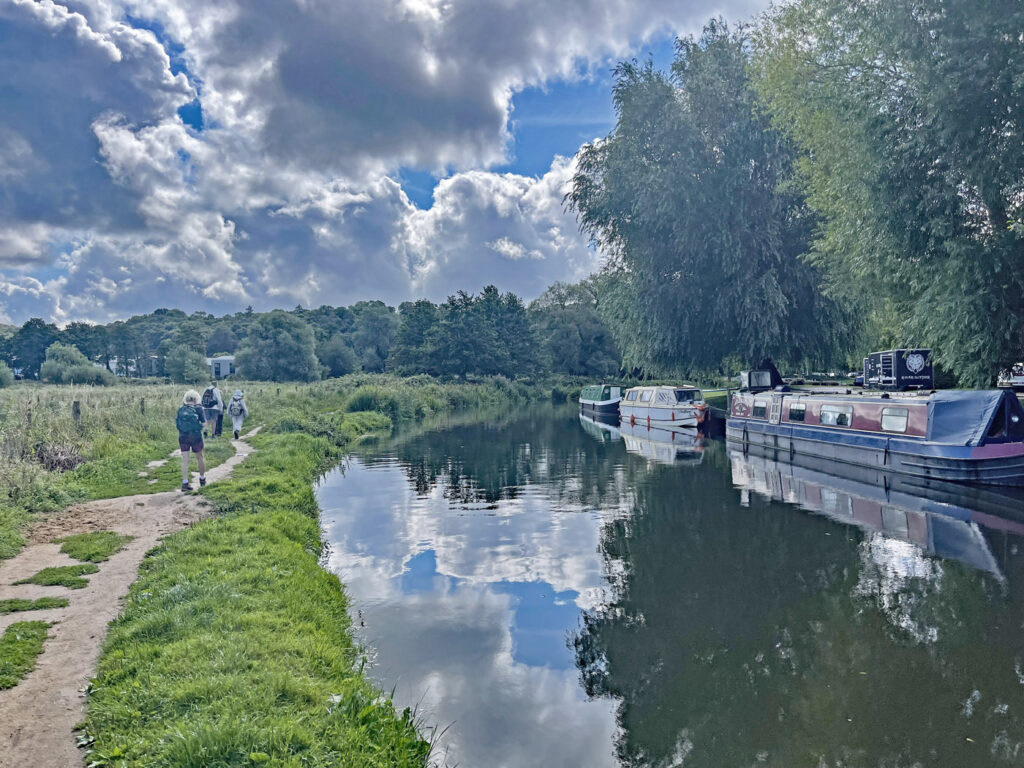


We came across paddle boarders who appeared to be having their first lesson and wondered how they would fare when they fell in the river which they surely would on their maiden voyage!
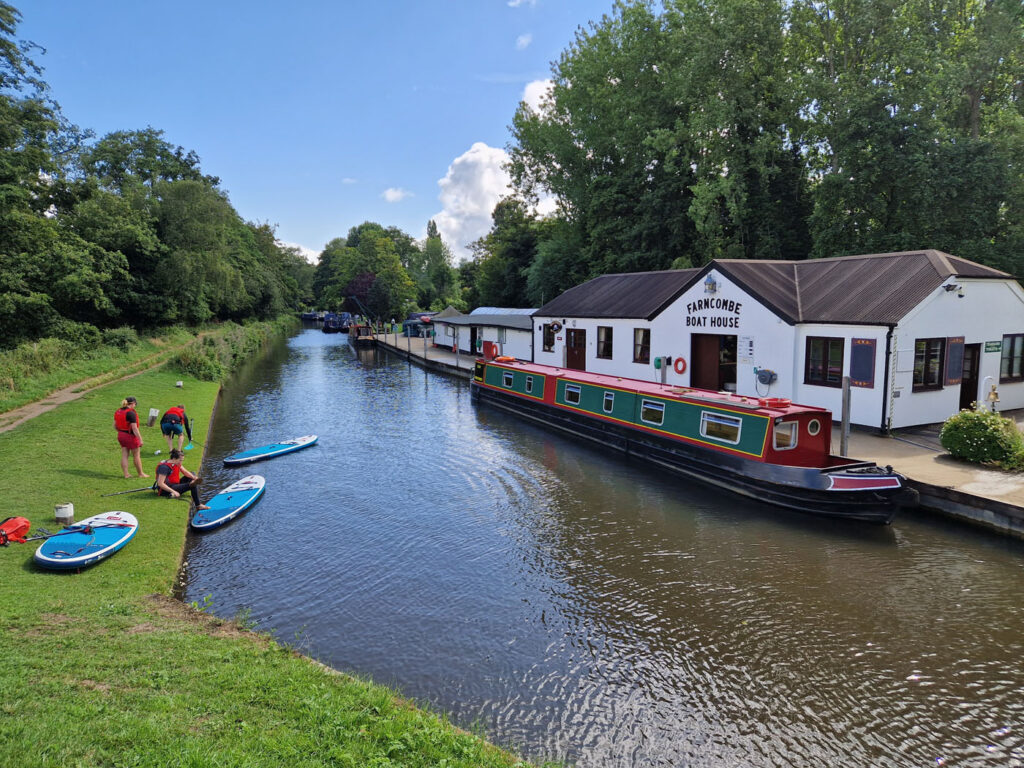
We met many dog owners with wet dogs and were passed regularly by joggers but mostly we were left to enjoy the walk together in peace, surrounded by idyllic English countryside, complete with grazing cows, butterflies and many wild flowers.


Narrow boats passed occasionally and a couple of times some were working the locks. A single scull caught our eye as it skimmed through the calm waters.
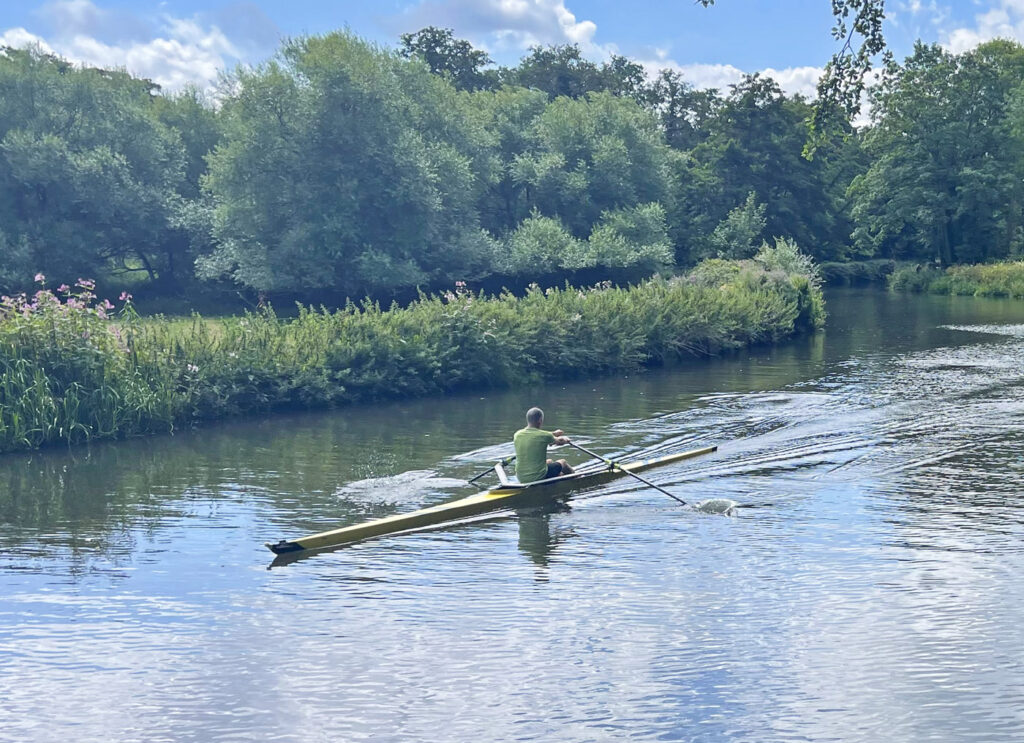


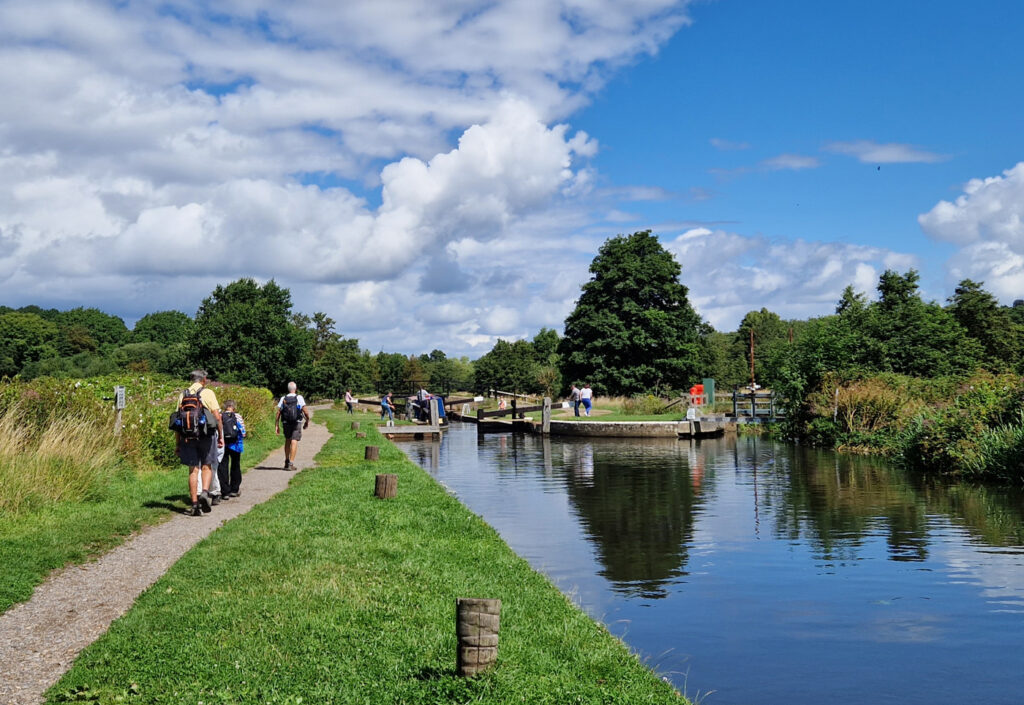
The River Wey holds the distinction of being among the earliest rivers in Britain to undergo navigation improvements, enabling it to accommodate barge transportation as early as 1653.
The Guildford to Weybridge waterway, spanning a distance of 15 miles, connected these two locations and ultimately provided access to London via the Thames River.
The Godalming Navigation, which was established in 1764, allowed barges to traverse an additional 4 miles upstream.
It would have been a bustling environment, being a major mode of transportation for Surrey merchants. Crews would be concerned about missing London tides and would work swiftly to unload goods of grain, timber, coal, and even explosives.
Every penny was valuable, and the time spent opening and closing locks and weirs was critical. Rollers were set on severe bends to help the barges round corners more swiftly and can still be seen.
However, Guildford railway station opened in 1845, making it possible to travel to London in under two hours. For a time, it was more cost effective to carry bulk commodities by canal, but the new railway unavoidably pulled some business away from the canals.
The National Trust currently operates and oversees the navigations as a recreational waterway.
We arrived at Guildford Castle as storm clouds threatened.
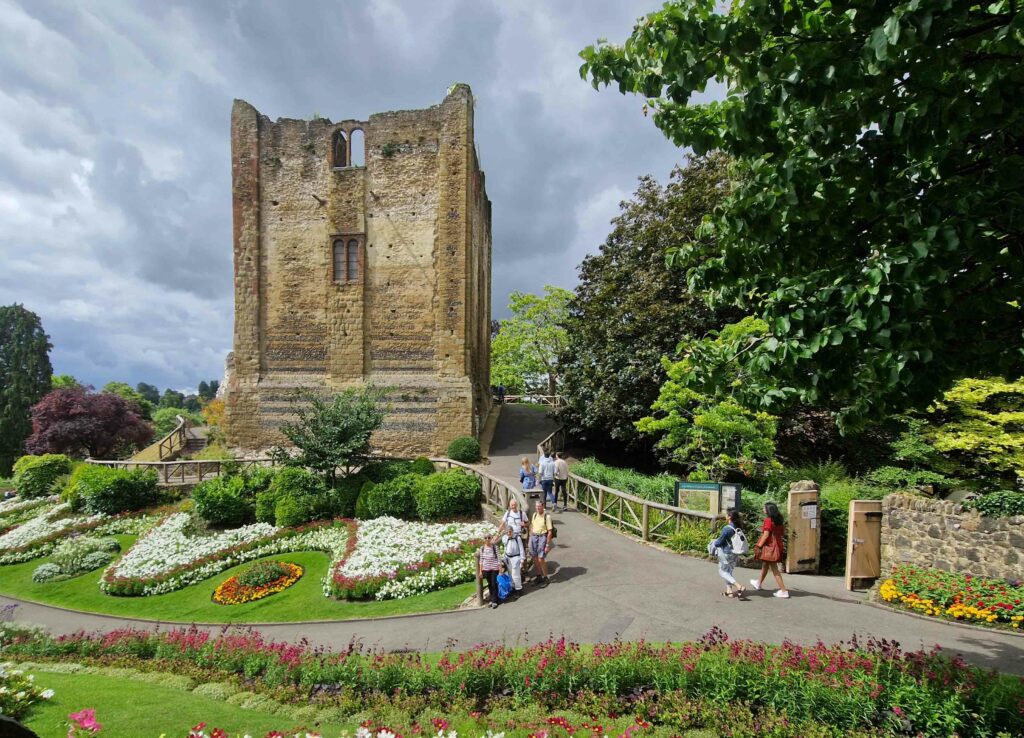
It is believed that William the Conqueror or one of his barons constructed Guildford Castle soon after the Norman invasion of England in 1066. Guildford Castle and its grounds, which had served as a Royal Palace, a prison, and a private residence, were sold to the Guildford Corporation in 1885. In honour of Queen Victoria’s Golden Jubilee in 1887, the grounds at Guildford Castle became public gardens in 1888.
We admired the castle gardens, which are concentrated at the 11th century Castle Keep and are noted for their brilliant floral displays and settled to eat our picnic lunch. Low and behold, half way through eating our sandwiches, down came the rain. We beat a hasty retreat under a tree for shelter and started out for the bus station.
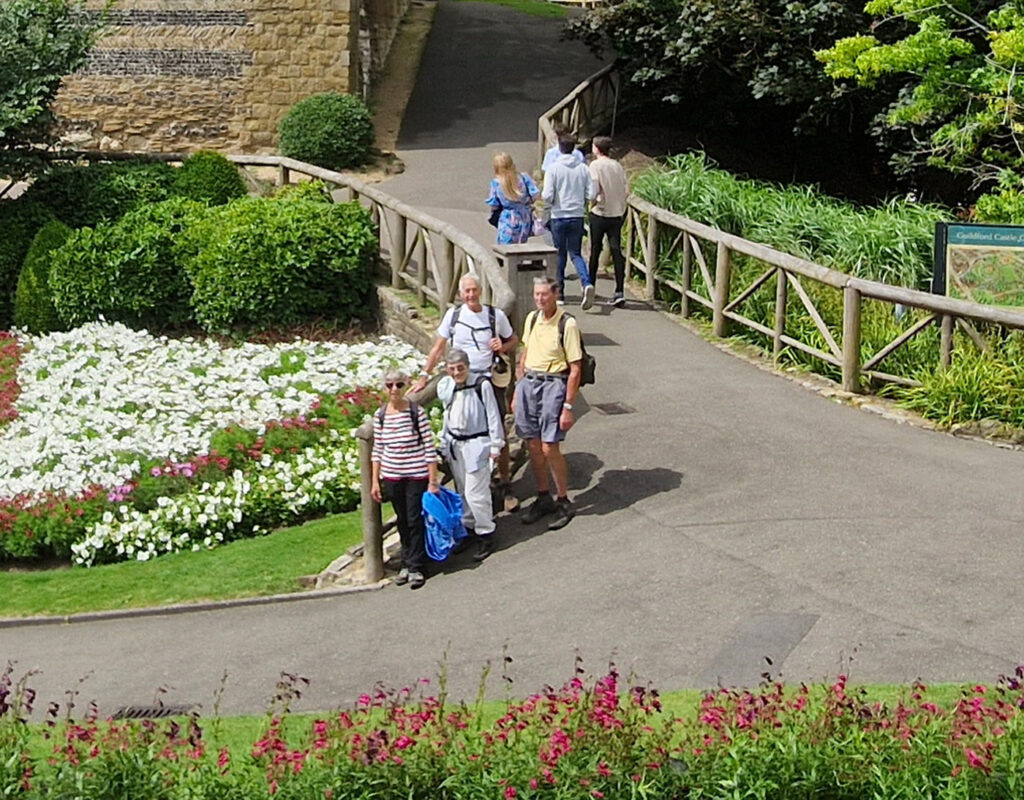
The number 70 bus to Godalming was delayed but this gave us a chance to finish our picnic. In turn, this resulted in us arriving in Midhurst with enough time for a cup of coffee and ice cream but sadly not enough time for the planned short walk via the river to St Anne’s Hill to check out Midhurst Castle. This photo is from our recce.
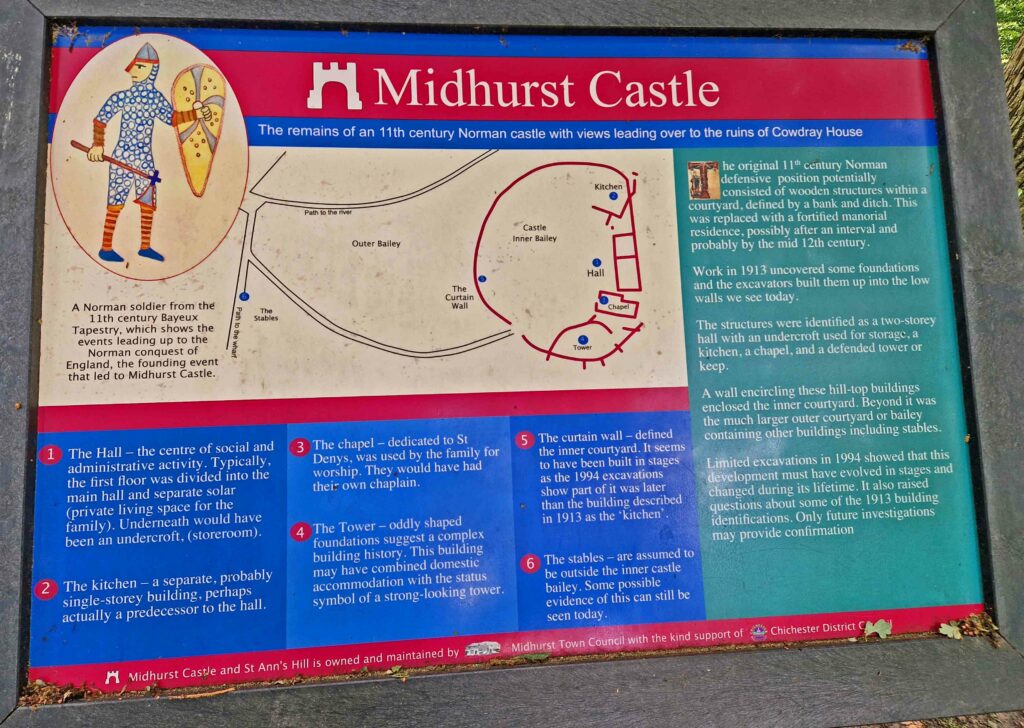
The Normans, were Scandinavian Vikings who arrived in northwest France in the early ninth century. They ruled the Normandy region until the mid-13th century. After William the Conqueror invaded England in 1066, several kings of England, including Henry I and II and Richard the Lionheart, were Normans who controlled both territories.
On St Ann’s Hill, which is located on the eastern side of the ditch, a Norman motte and bailey timber fortress was constructed in 1066. A stone fortification was built to take its place in the late 12th century and was used for 100 years before being abandoned. Then, a new home was constructed on the plain below, which would later become Cowdray House during the Tudor era.
The foundation stones, hidden by trees, are all that’s left of the Norman motte and bailey castle that formerly stood on St Ann’s Hill in Midhurst.
The castle’s existence was crucial to the development of the town of Midhurst, even though it was later abandoned in favour of the Tudor mansion of Cowdray House. The remains of the motte and bailey, and the foundation walls are now a scheduled ancient monument. To be visited another time.
Refreshed with coffee, tea, ice cream and cake, we boarded the number 92 bus back to Petersfield, all agreeing that it was a very interesting and somewhat different walk, well worth the journey.
Author: Linda Farley
Photographs: Paul & Linda Farley
